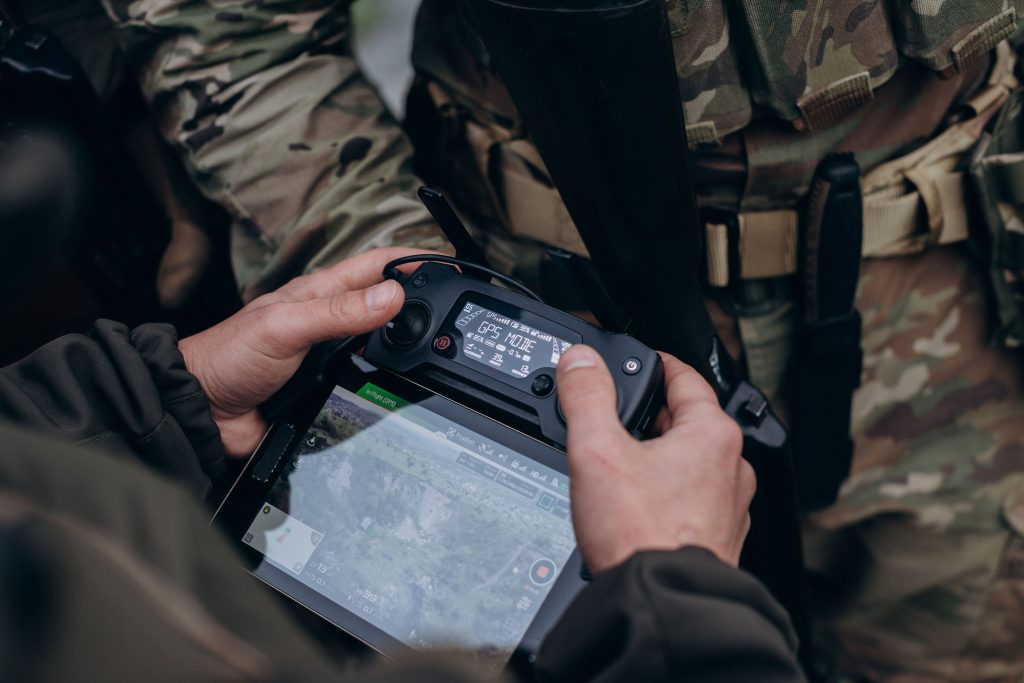It’s time to rethink 5G drone connectivity
by Macy Summers
This article was originally published in COTS Journal on 27 November 2023.
Earlier this year, the renowned RUSI Journal reported that Ukraine is losing 10,000 UAVs per month, a substantial figure. While many commentators perceive these losses from the point of view of a shift toward mass procurement of disposable drones, the reality is that the electromagnetic signature of Ukraine’s drones is being detected by Russian forces, turning these assets into easy, defenseless targets.
While 5G cellular networks have brought new capabilities to military connectivity (high bandwidth, low latency), the issue of Ukrainian drones highlights significant challenges with conventional, cellular (3GPP) 5G networks being used for drones and similar unmanned vehicles. Some cellular 5G networks may even be the root cause of drone losses because of their easily detected (and located) electromagnetic spectrum.
This article explores the complexities of wireless connectivity for drones and the various types of (tactical) networks best suited to different use cases.
The challenges of today’s 5G and Wi-Fi networks

Drones in tactical scenarios nowadays are mostly connected using Wi-Fi technology, not 5G. In fact, and contrary to popular belief, 3GPP 5G technology (that is, 5G commercial networks) is unsuited to tactical scenarios because it requires subscriptions to a network operator and supporting infrastructure such as cell towers.
Alternatively, private 5G networks are much better suited to military operations because they use a dedicated (private) slice of the spectrum, enabling a direct connection and low latency. However, spectrum use is tightly regulated, and there are already reports of regulators concerned about how commercial and military providers will share portions of the 5G spectrum.
But all these challenges fade compared to the main one – the inherent detectability of all devices connected to any of these networks, be it Wi-Fi, 3GPP commercial, or private 5G cellular networks.
Many companies providing cellular 5G claim they provide encrypted systems. Still, the unmanned devices connected to these networks are easily detected at up to hundreds of kilometers because they generally use signals below 6 GHz.
We all know that low probability of detection (LPD) and the associated element of surprise are crucial for success and survival in military scenarios.
mmWave technology delivers superior latency, high bandwidth, and LPD
IEEE 5G mmWave-based systems are emerging as the secure and stealthy solution to address tactical communications needs. They utilize distributed mesh networks rather than a centralized core network, meaning there is no single point of failure and no core infrastructure (e.g., cell towers) required.
Importantly, mmWave technology exploits license-exempt, non-commercial spectrum frequency bands, such as the V-Band at 57-71 GHz, which is, 14 GHz of continuous radio spectrum.
Furthermore, as the unlicensed mmWave radio frequency band, the V-band has the unique capability of being LPD by its very physics nature.
V-band is unique because it causes radio signals to resonate perfectly with oxygen molecules in the air – a phenomenon called oxygen absorption. The oxygen creates an incredible spike in attenuation that almost appears like a brick wall at a distance and creates a curtain of invisibility between a tactical team and its adversary. Within portions of the V-band, connectivity truly has an LPD quality.
Low latency is another essential attribute of a military network. mmWave networks deliver at least an order of magnitude lower latency compared to cellular 5G networks, partially due to the point-to-point nature of the networks rather than the centralized network architecture typical for cellular 5G.
Horses for courses or why different networks are needed for other drone use cases
There is no single perfect solution to solve all connectivity requirements for drones. For large military bases and in some urban scenarios, it makes perfect sense to leverage 5G commercial network or 5G private network technology with appropriate security enhancements.
In a high-threat battlefield environment, however, such as at a mobile command post or in non-urban forces engagement, tactical networks are subject to harsh environmental conditions, electronic warfare targeting, and jamming. In such an environment, military forces need a stealthy tactical network with LPD and LPI (Low Probability of Intercept) to avoid drone detection, takeover by counter-drone systems, or drone destruction.
Drones as means of surveillance and data gathering

Drones are becoming increasingly commonplace as a tactical means of surveillance, weapons delivery, and data gathering. Drones are now a fundamental part of a military order of battle, providing huge amounts of information, high-resolution imagery, and data with relatively small budgets compared to manned reconnaissance vehicles.
Unmanned drones, both in the air and underwater, can undertake scouting missions and be used as part of a broader fleet to defend against or attack the enemy.
However, capturing and retrieving the data collected by unmanned drones can be difficult, particularly within a contested environment. Connecting drones to tactical vehicles or command posts provides added functionality, but, again, this can prove incredibly challenging in disrupted, disconnected, intermittent, and low-bandwidth (DDIL) environments.
IEEE 5G mmWave for use with drones provides a stealthy LPD connectivity and higher bandwidth than ever possible, with broadband speeds of 100s of Mbits per second and more, depending on range. The ability to swiftly transfer huge amounts of data means missions can be extended to collate more data over longer periods of time because that data can be transferred quickly and in full.
For example, when working with a tactical vehicle, ISR drones can connect and communicate via nodes fixed to the top of the vehicle. With communication distances of up to and exceeding 4,000m, medium-sized drones can go over to inaccessible locations, and travel at heights of 100m and more.
Drones support communication with the command post
Tactical communications enable situational awareness and the creation of a common operating picture. Drones can play a key role here by acting as a relay point or a cell tower connecting a Local Area Network (LAN) with a Wider Area Network (WAN) and connecting tactical units with the command post. In the not-too-distant future, commanders will be able to see at a glance what is going on on the battlefield using dashboards displaying rich data (video, images, and voice) supplied by drones and respond accordingly. This has not been possible in the past, with (mostly) push-to-talk walkie-talkies being used for tactical communications.
The connection from LAN to WAN networks, facilitated by drones and satellite links, will also enable tactical teams to call for fire digitally.
There are several other use cases where drones will play an important role in the future, say swarms of drones or other distributed systems; however, drone capabilities will only be fully exploited with advanced connectivity. This means a high bandwidth, low latency, and stealthy connectivity, enabling communication with other unmanned devices, manned systems, tactical posts, and the command post.
